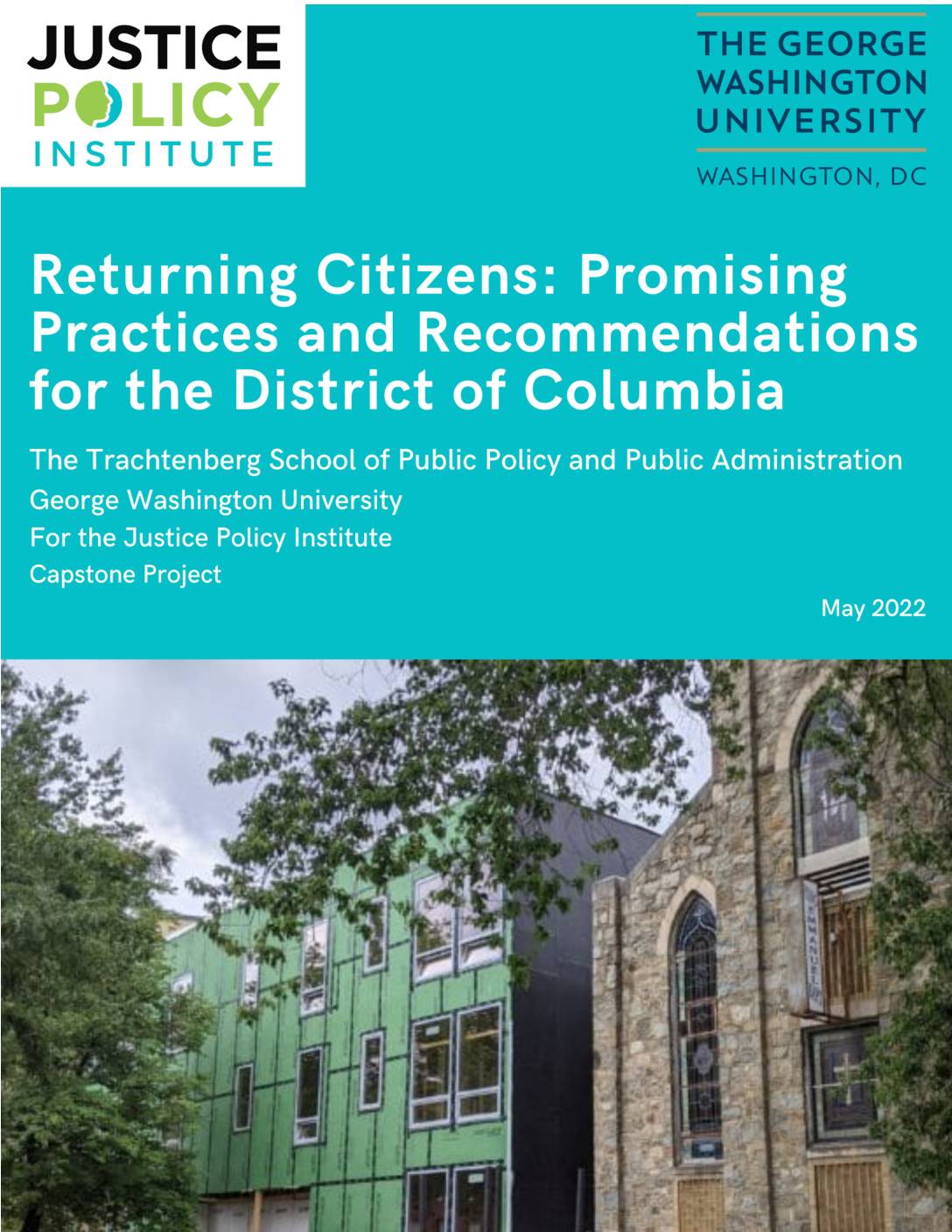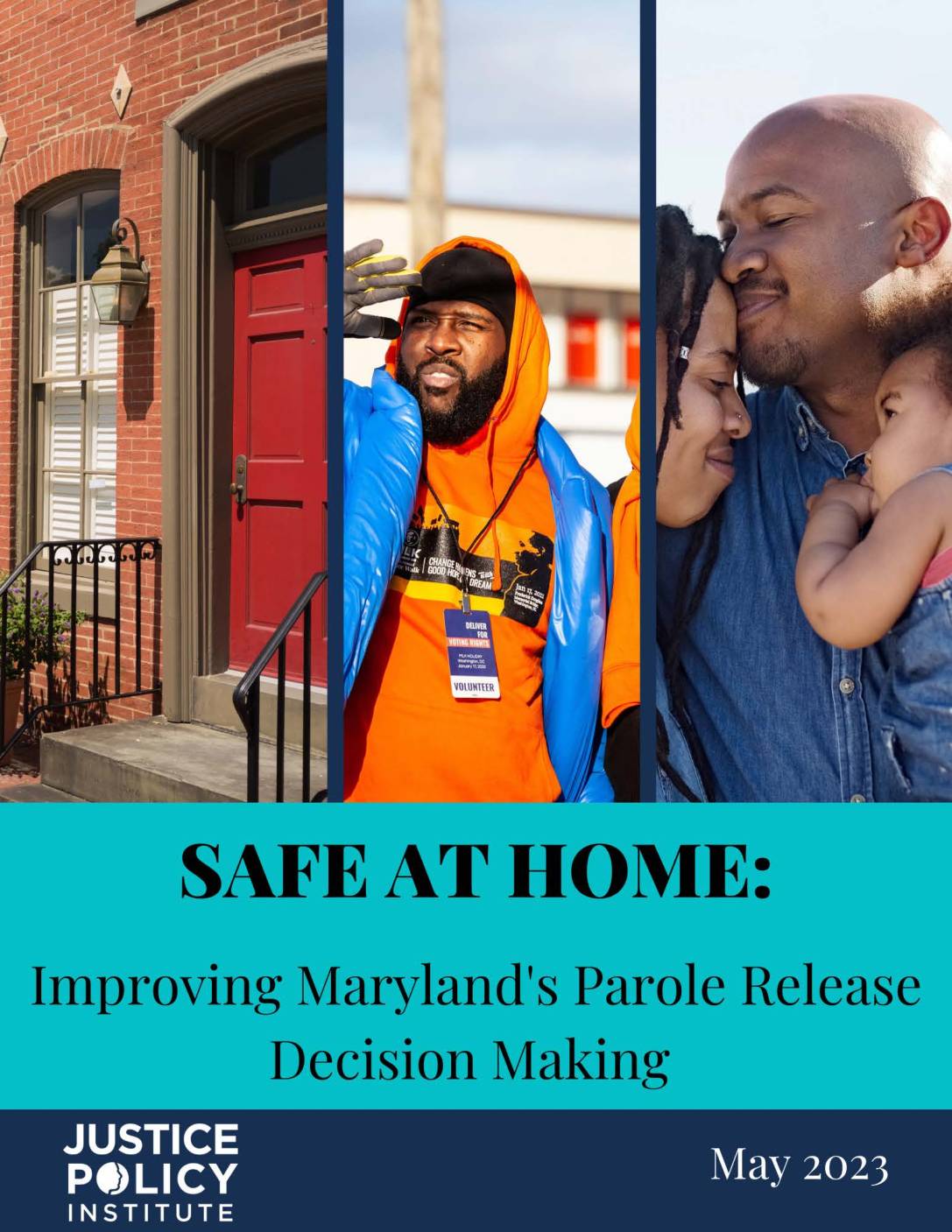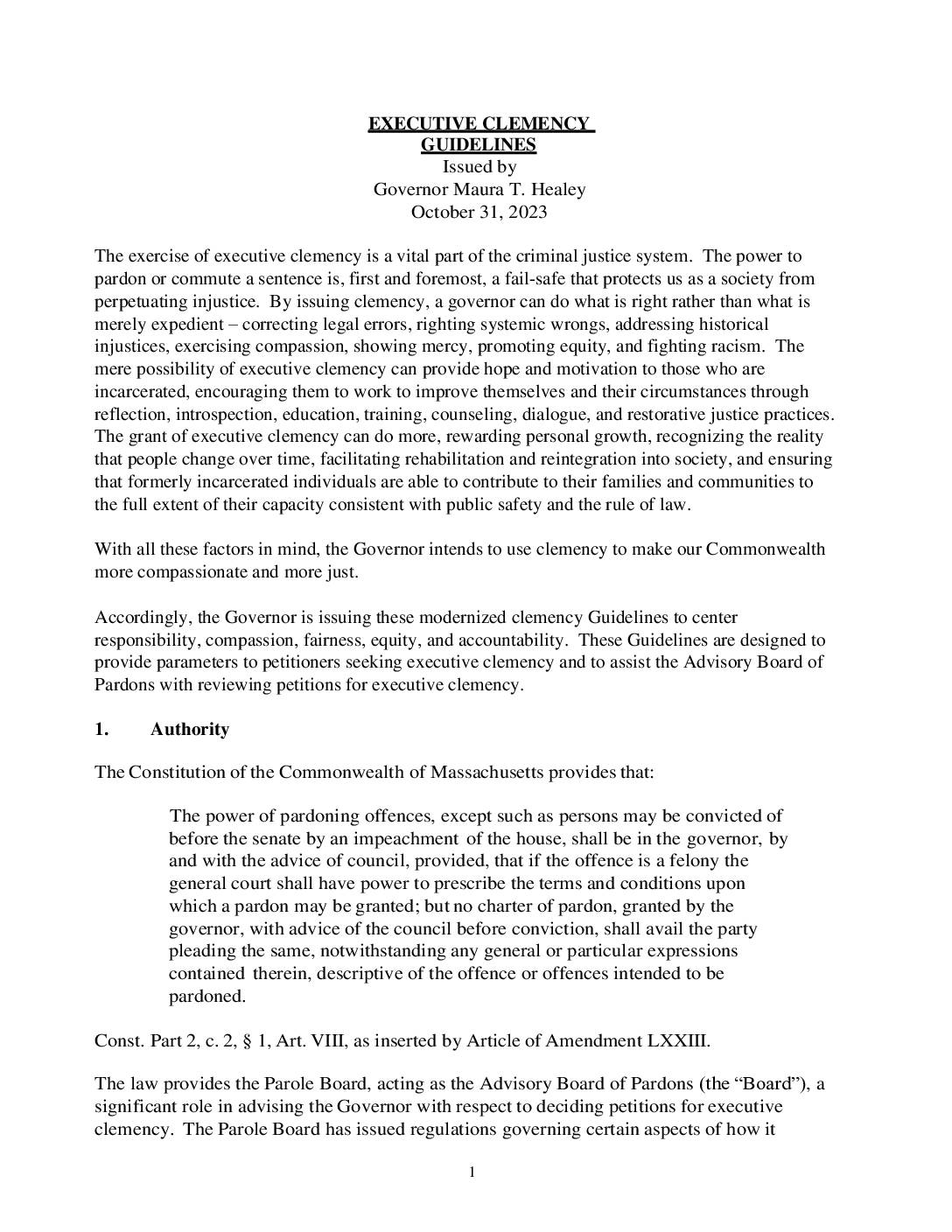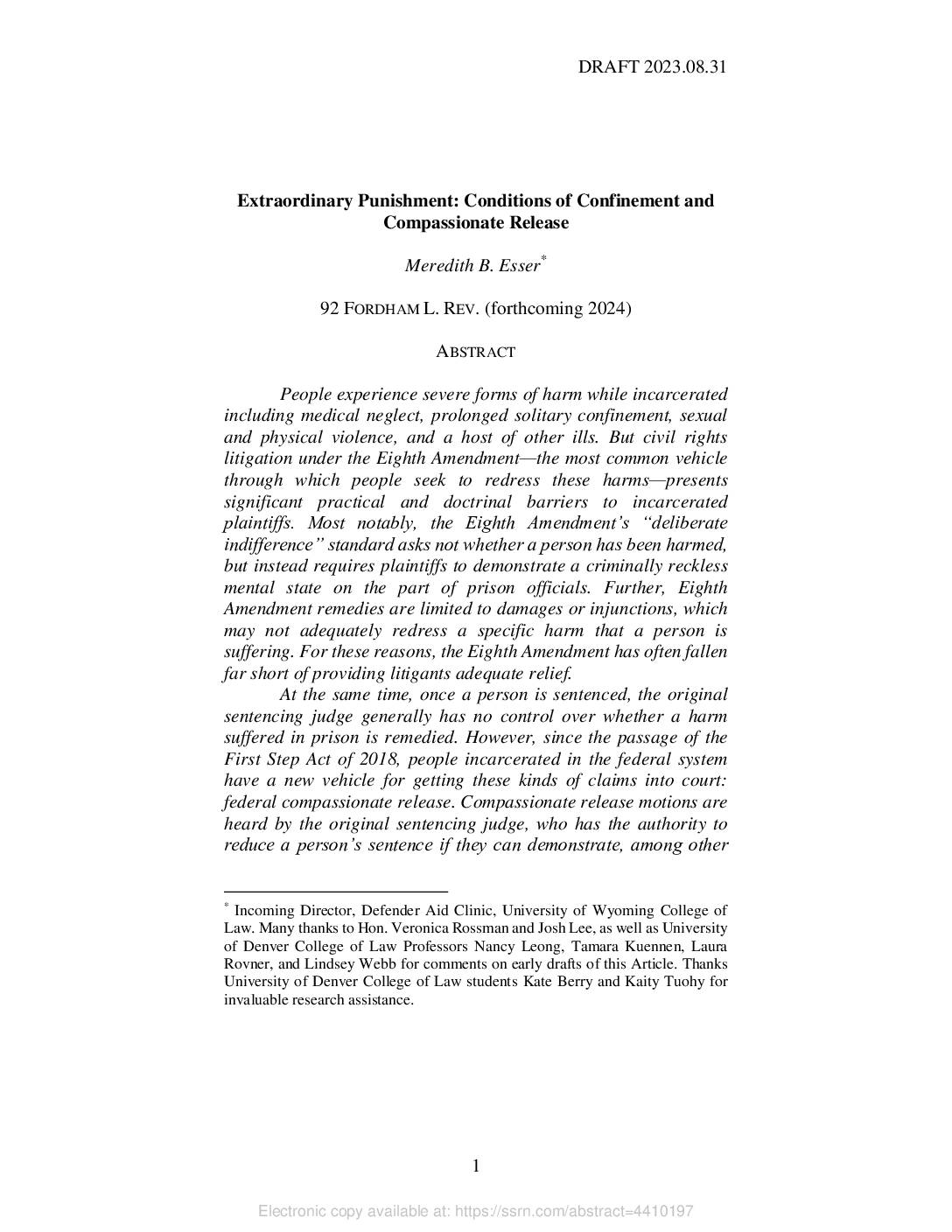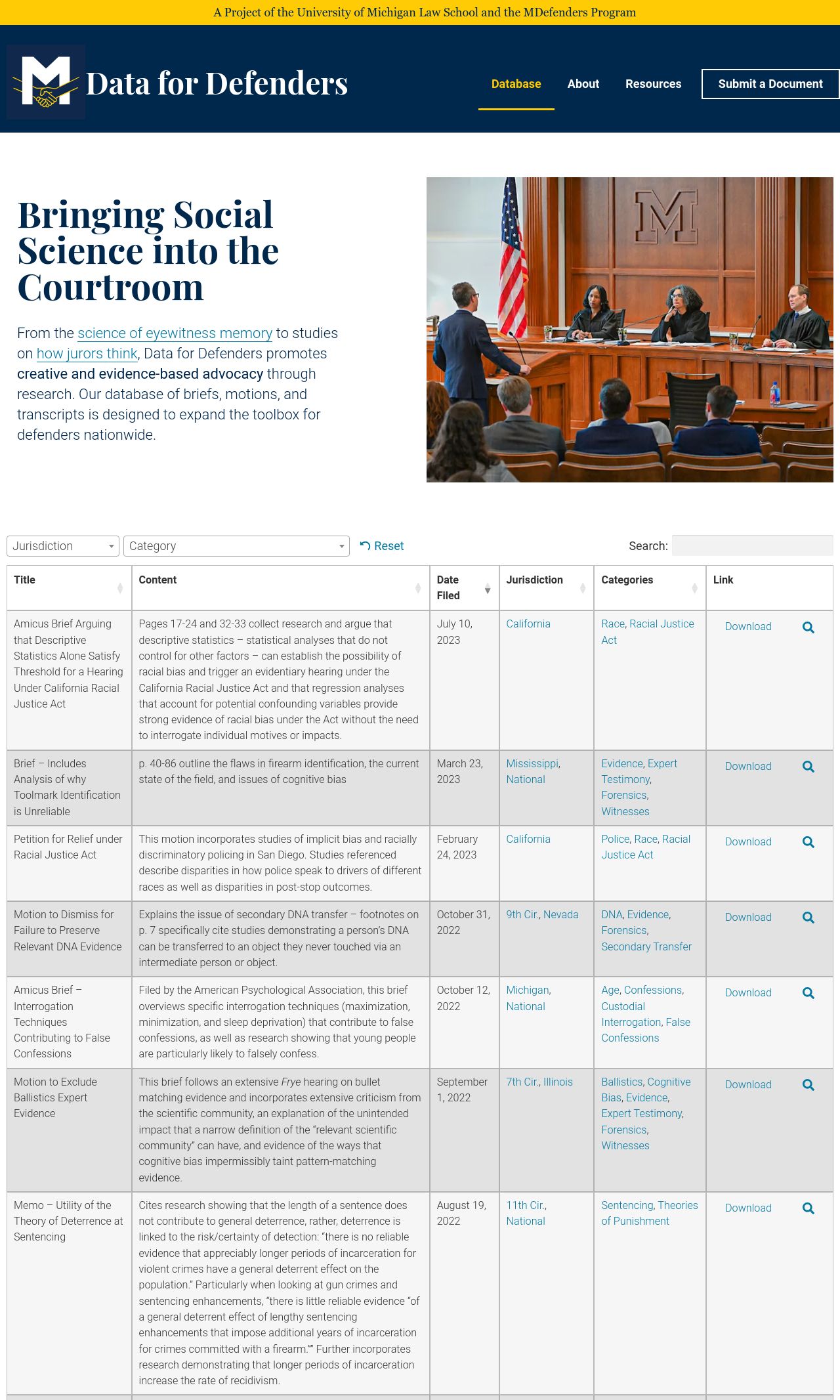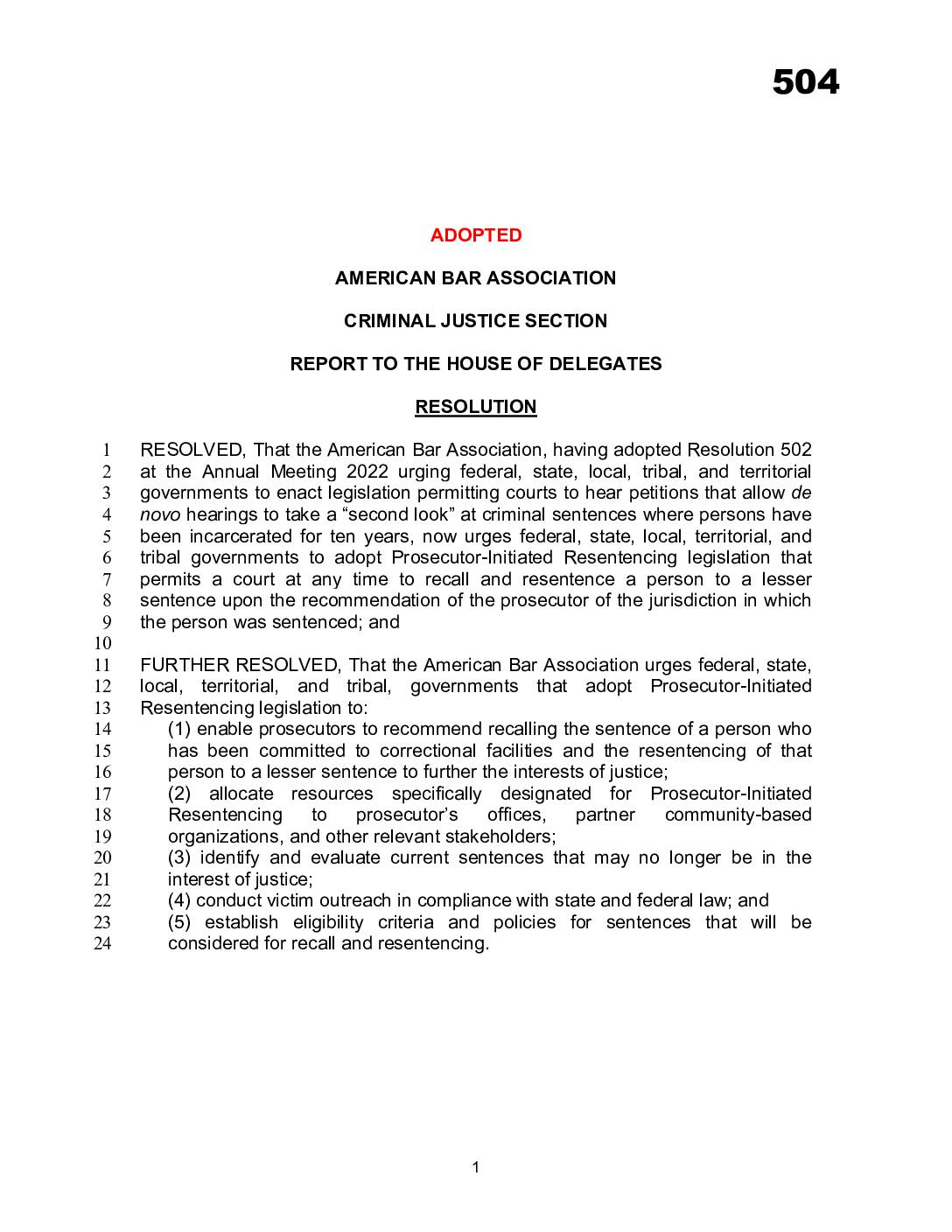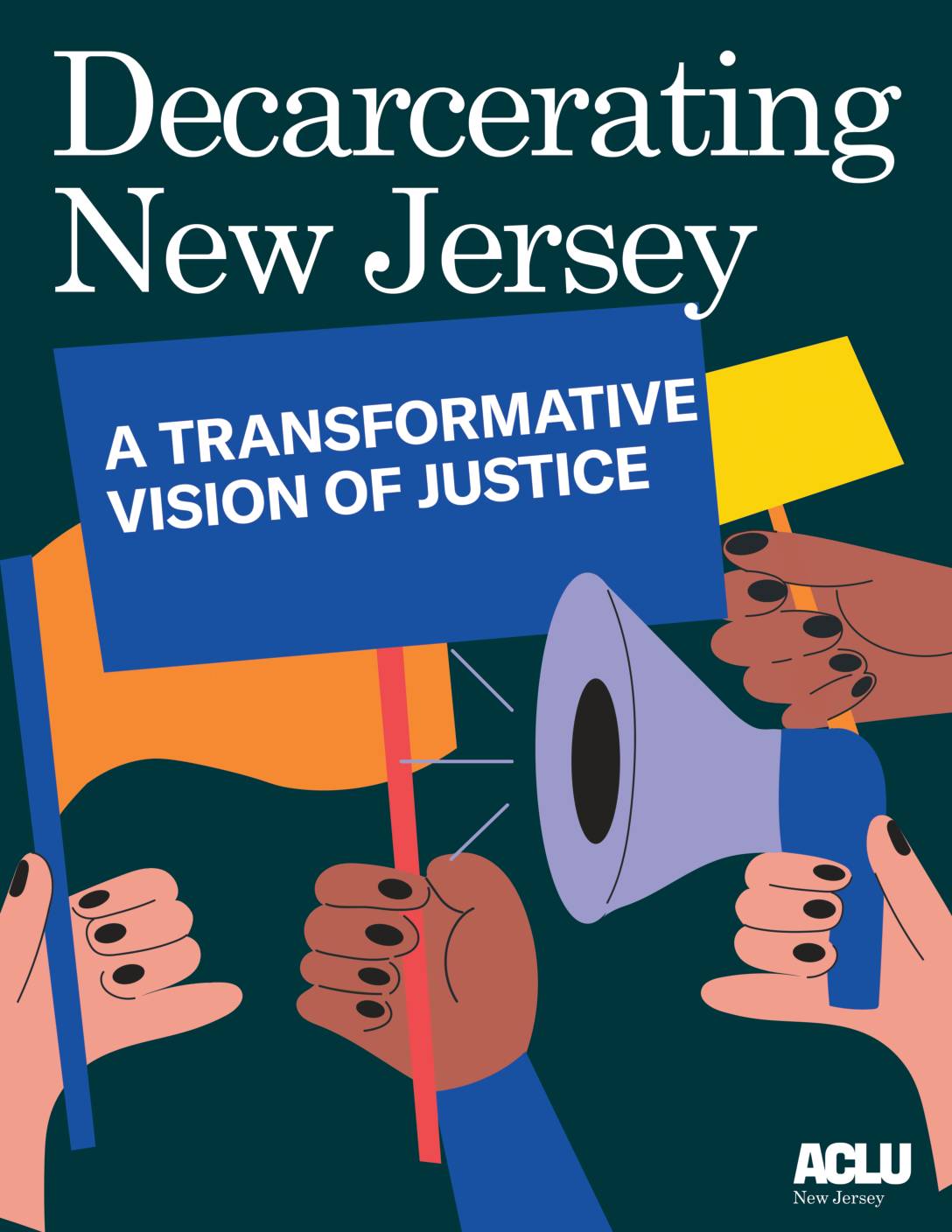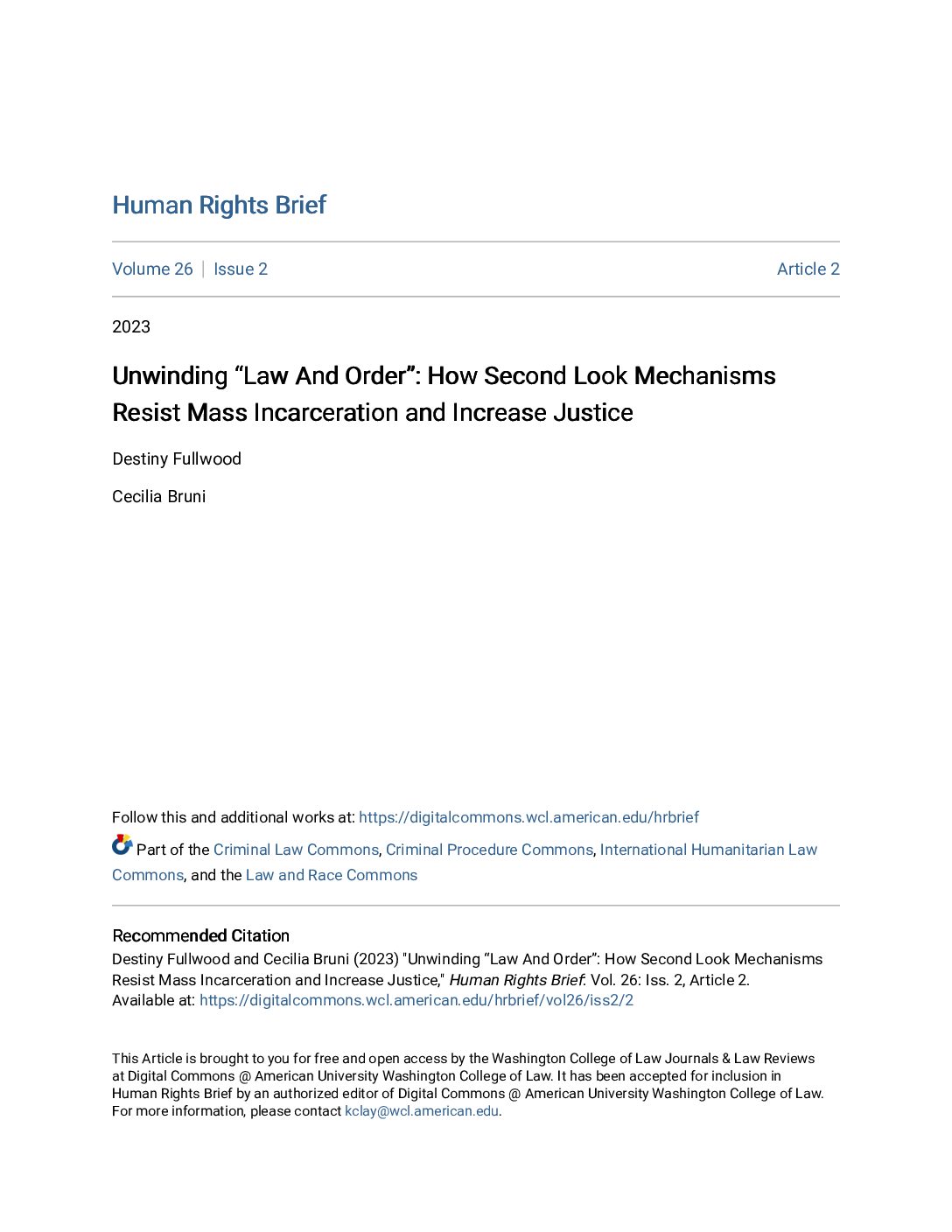PDF Returning Citizens: Promising Practices and Recommendations for the District of Columbia
The Justice Policy Institute’s (JPI) mission is dedicated to reducing the use of incarceration
in the justice system by promoting fair and effective policies. With this goal in mind, the GW team
chose to dive deep into the flaws and challenges of the re-entry system. The District of Columbia
currently does not have policies and programs in place that make re-entering society easier for
returning citizens. These individuals face many obstacles, including employment struggles, a lack
of access to education resources, a lack of resources for mental and behavioral health, and many
more. However, the main problem addressed in this report is the access to housing for those who
are re-entering society. The Justice Policy Institute requested an examination of the concept of
homelessness and recommended practices that could be adopted by Washington D.C. to
accommodate those re-entering society, referred to as returning citizens throughout this report.
This report will examine the current literature surrounding this issue, analyze interviews with
executives within this field, and establish promising practices by utilizing identified key
components. Finally, recommendations were provided to JPI for their use in advocating for policy
change on this issue


